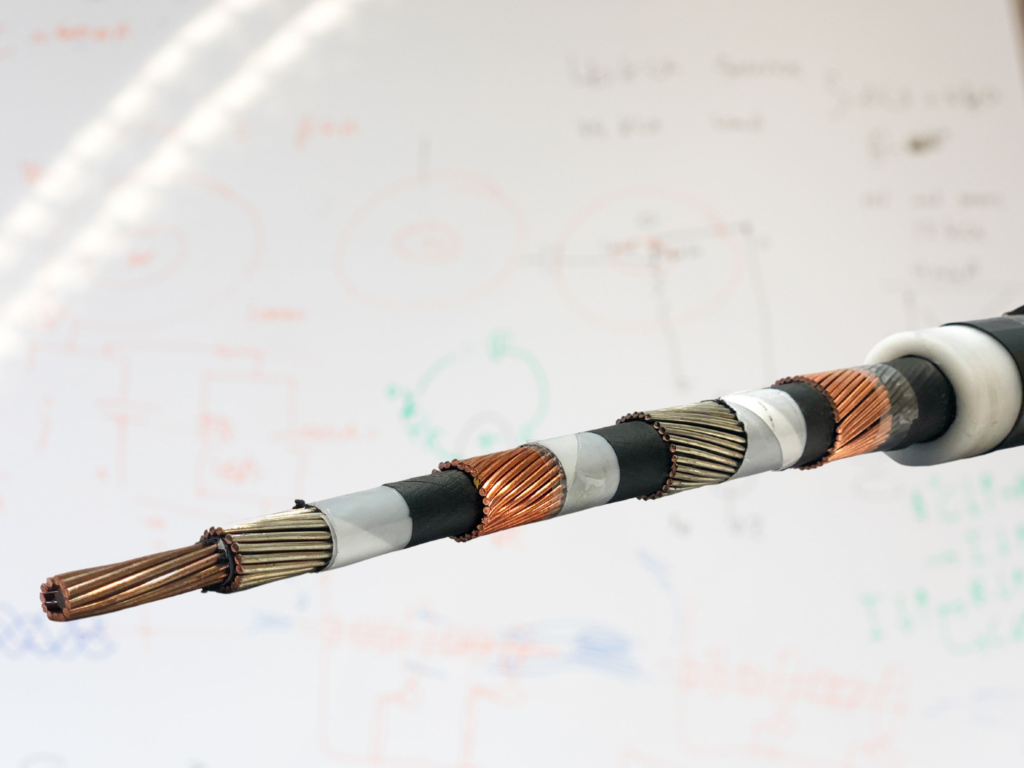Networks
CTS cable solutions provide more efficient power delivery in onshore and offshore networks.
Electricity Generation and the Grid
Since the company’s foundation in 2014, Enertechnos’ focus has been – and remains – developing and adopting a new form of cable for transmission and distribution networks called Capacitive Transfer System (CTS).
Electrical energy needs to be transmitted and distributed from the point of generation to the point of use. All of this must be done cost-effectively, considering the geographical, topographical and political barriers.
By and large, electrical energy cannot be stored except on a very local and usually low-power basis. As a result, electricity continuously flows between generation and consumers while creating heat losses inside power lines.
Benefits of CTS in Networks
According to the International Energy Agency (IEA), losses in grids resulted in around one gigatonne of carbon dioxide (Gt CO2) emissions in 2018. They estimate that reducing worldwide losses towards efficient levels of around 5% from as much as 18% in some regions today could reduce these emissions by over 400 Mt CO2.
Innovative CTS cable design can deliver power more efficiently while reducing losses and the amount of copper used to provide the same power as conventional cable.
By 2050, the peak energy demand is expected to double against 2020 levels. Transmission and distribution losses in 2040 are equivalent to the forecast demand by the global fleet of electric vehicles that year.
Subsequent cable testing and modelling have shown that CTS can:
- Reduce losses by up to 10%
- Provide more capacity per conductor unit, reducing cross-section by up to 30%
- Assist with harmonic filtration
- Help provide reactive support in grids
According to the International Energy Agency (IEA), losses in grids resulted in around 1 gigatonne of carbon dioxide (Gt CO2) emissions in 2018. They estimate that reducing worldwide losses towards efficient levels of around 5% from as much as 18% in some regions today could reduce these emissions by over 400 Mt CO2.
By 2050 it is expected that the peak energy demand will double against 2020 levels. T&D losses in 2040 are equivalent to the entire forecast demand by the global fleet of electric vehicles (EVs) in that year.
Innovative CTS cable design can deliver power more efficiently while reducing losses and amount of copper used to deliver the same power as conventional cable.
Subsequent cable testing and modelling has shown that CTS not only can reduce losses by up to 47%, it can also provide more capacity per unit of conductor reducing cross section by up to 30%, assist with harmonic filtration and help to provide reactive support in grids.

CTS Cable
Enertechnos has developed solutions for underground cable systems at voltages up to 150kV and delivering up to 400MVA. These solutions can reduce cable costs by up to 30% per MVA delivered while reducing heat losses inside the cable.
The Future of CTS
We are developing subsea CTS designs to support ongoing growth in offshore networks connecting islands, renewable generation or oil & gas sites. High voltage application of CTS can allow delivery of offshore wind power over long distance by AC, avoiding expensive and challenging-to-maintain HVDC converters. Although CTS was initially developed for cable solutions, it can also be adapted for overhead line applications.


CTS cable
Enertechnos has developed solutions for underground cable systems at voltage up to 150kV and delivering up to 400MVA, potentially reducing cable costs up to 30% per MVA delivered while reducing heat losses inside the cable.

The Future of CTS
We are developing subsea CTS designs to support ongoing growth in offshore networks connecting islands, renewable generation or oil & gas sites. High voltage application of CTS can allow to delivery offshore wind power over long distance by AC, avoiding expensive and challenging-to-maintain HVDC converters. Although at first CTS was developed for cable solutions it can be also adapted for overhead line applications.

